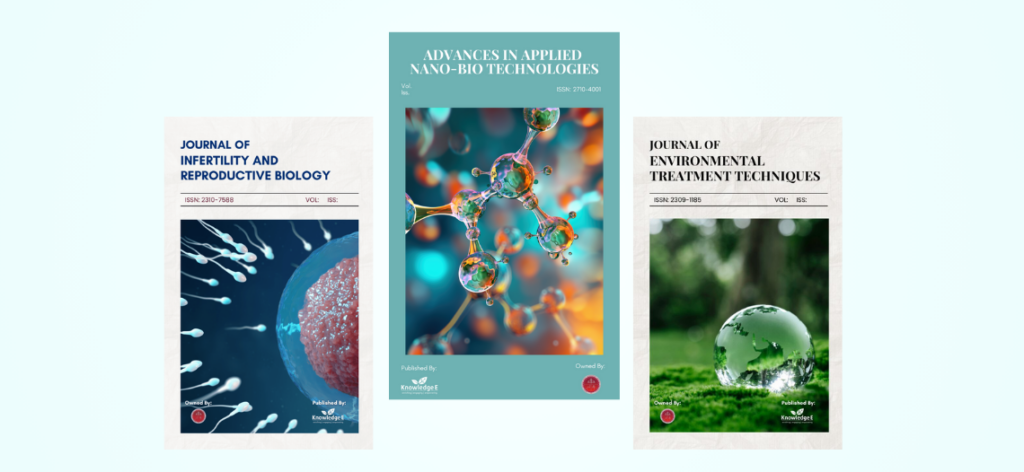I love literature, and books are probably my favourite thing in the world. In fact, it’s possible they even rank higher than my husband! When I moved to Dubai last February, I only brought two suitcases: one filled with clothes and the other full of books. After arriving, the first two things I bought were bookcases and (you guessed it) more books! I was delighted to find so many second-hand shops in Dubai where I can buy everything from Mills & Boon romances to science-fiction and eighteenth-century novels.
One of the nicest parts of my current job, as Head of Publishing for Knowledge E, is getting to read some of the new literary criticism we publish in our Open Access publications. I have come across so many new books, plays and poems from around the world – everywhere from Iraq to Indonesia. This is particularly enjoyable for me because my PhD was in nineteenth-century British literature, with a specific focus on the poet Lord Byron. It’s been great to broaden my horizons and learn about new authors. Here are some of my favourite articles: http://bit.ly/39Cf2Hj
I still study eighteenth- and nineteenth-century British literature (I’m currently working on an academic monograph on adultery discourses in popular print culture and literature in this period), publish regularly in academic journals, and sit on various editorial boards for leading academic presses. And in this blog, I want to use my own experiences to offer a brief guide on what editors of academic literature journals look for in their authors.
After all, as academics, we devote hours of our lives to conducting research and writing it up – it can take months, even years! When we finally finish creating an article and submit it to our chosen journal, we usually have to wait months for them to respond. Then, if we get a rejection (which unfortunately happens to everyone at some point), we must start the whole process all over again…
That’s why it’s so important to learn what editors want and how to give it to them.
So, in this blog post I’ll offer some tips to help reduce the risk of rejection and allow you to enjoy the best three words in academia “accepted without revisions” – which is practically the academic version of ‘I love you’!
***
Obviously, what editors want varies from journal to journal and subject to subject. However, there are some broad categories which every journal editor considers when evaluating a new article submission:
- Originality. You have to offer something new and different to make it worthwhile to publish.
- Relevance to the journal and target readership. After all, editors want their journals to be read and cited just as much as you do.
- Value to the field. This is crucial for an editor. It isn’t enough to write something new, it has to be useful for other scholars.
- Academic rigour. You might have the most amazing new idea or have uncovered groundbreaking material, but if you can’t present a coherent argument supported by valid evidence, and conform to international academic standards, no one will publish your discovery.
- Impact. This is arguably what drives the engine of academia: the need to demonstrate and quantify the importance and contribution of research to the wider academic community. This is important for journals as it is for individual authors.
So always explain your article’s unique value to the editor when you submit, highlighting the above categories and remembering the to stress each of the below:
 In addition, every discipline has its own priorities and criteria – and Literature journals are no different. When I get sent an article or a book proposal, I look for the following:
In addition, every discipline has its own priorities and criteria – and Literature journals are no different. When I get sent an article or a book proposal, I look for the following:
- • Quality of writing
- • Clarity and coherence of argument
- • Convincingness
For literary criticism, perhaps more than any other academic discipline, perfectly written prose and a well-structured argument are vital. They not only keep the reader engaged and attentive, but also support the author’s credibility. After all – how can the reader trust you are equipped to evaluate a piece of literature and knowledgeably discuss the quality of the writing, the structure of the text, and the stylistic techniques of the authors if you cannot display your own skills in these arenas during your analysis?
Sometimes style really is everything
Typos and formatting are hugely important for editors. Not only do they demonstrate that the author knows academic best practices, but a lot of errors means a lot of work for editors. Most academic journal editors are unpaid and must squeeze their editorial duties into busy schedules. The more work your article represents, the less appealing it will be. Your article could even be rejected if the formatting is incorrect or there are too many language issues.
Therefore, you must avoid typos and grammatical errors. Accuracy substantiates your credibility, whereas inaccuracy undermines it. Read, read, and read again. And when you can’t face re-reading your article for the 300th time, get someone else to check it. Ideally, try and find a friend who understands your research and is also a native speaker of the language. They will be a fresh pair of eyes and will always spot issues you overlooked.
However, if you’re worried about your formatting or language, and can’t find a helpful friend, there are lots of paid services which can help you. KnE Publishing, for example, offers a dedicated editing service for academic authors, helping your research get the recognition it deserves.
KnE Publishing support services can help, click here!
Be convincing
For literary criticism, a tight, well-organised structure is extremely important. The ideas should seamlessly flow from one paragraph to the next as you develop your argument. Avoid the stilted formulaic blocks demanded by many scientific disciplines. Every sentence should contribute to the overall argument, with nothing unnecessary or divergent; a good piece of literary criticism should be like a well-tailored suit, not a shapeless t-shirt!
More than anything else, as an editor what I really want is a well-structured and substantiated argument. I want to finish reading the article and think: “ok yeah, I’m convinced”.
Sometimes it can be hard to get the structure of the argument right – make it as convincing as possible and use the right pieces of evidence in the right places. There’s so much material you want to fit in – it can be hard to work out what is really necessary to the argument and where it should go to make the strongest impact.
I find two methods helpful when writing my articles. First, before I start writing, I try and group all the relevant ideas, quotations, and source material together into thematic blocks which can then be broken down into individual paragraphs. Spider diagrams can be useful for this – though you might need a whole wall to draw them on!
Then, once I’ve written a complete draft and polished it as much as possible, I use a reverse outline. This is tedious and time consuming, but an excellent way to tighten your article, identify and remove unnecessary content, and deal with jarring segues between ideas (there are loads of useful websites teaching you how to create one of these).
If you’ve done all of this and still feel your article needs some work, there are paid services which can help. For example, KnE Publishing offers a technical peer review service where experienced specialists in your field evaluate your article, identify weaknesses, and make suggestions for structural improvements.
KnE Publishing support services can help, click here!
Rejection can be useful
Finally, remember that even if your article is rejected by a journal editor – every rejection is useful. Although Peer Reviewers might seem harsh and unfair, they are THE best source of advice for any author:
- • They give valuable guidance from experts in your own and affiliated fields
- • They offer new perspectives and constructive criticism
- • They ensure you publish in a suitable publication
- • They also ensure that the article published is the best possible version of your research
***
So, to conclude – when trying to get an article published in an academic literature journal, make sure you give editors what they want: a well-written, well-argued piece of original research that conforms to their journal’s scope and aims.

It can take a long time to get something published, and sometimes you’ll just want to throw the whole thing in the bin! But remember – you are working on research that will make a valuable contribution to your subject field; it might take time, you might need to rewrite it a hundred times to get it perfect, but your research will be published in a good journal eventually.
I hope you found this guide useful and are now better equipped for your next submission!
Need extra support? To learn how KnE Publishing can support your publishing and research cycle, request more information below!
Twitter: @epatersonmorgan
ORCID iD: https://orcid.org/0000-0002-6681-1709





